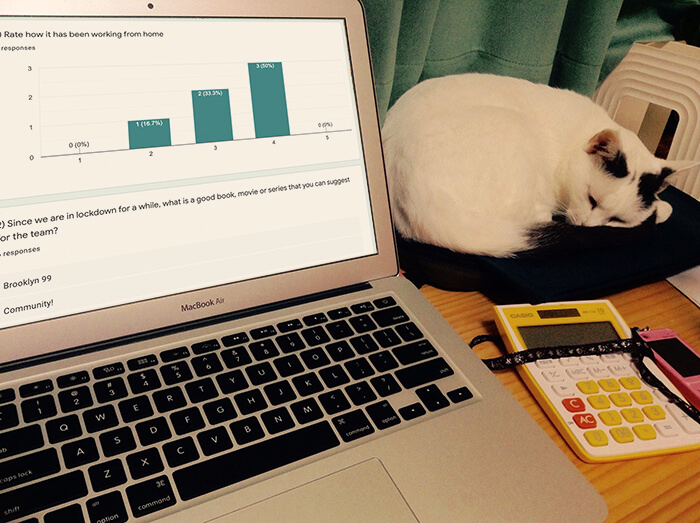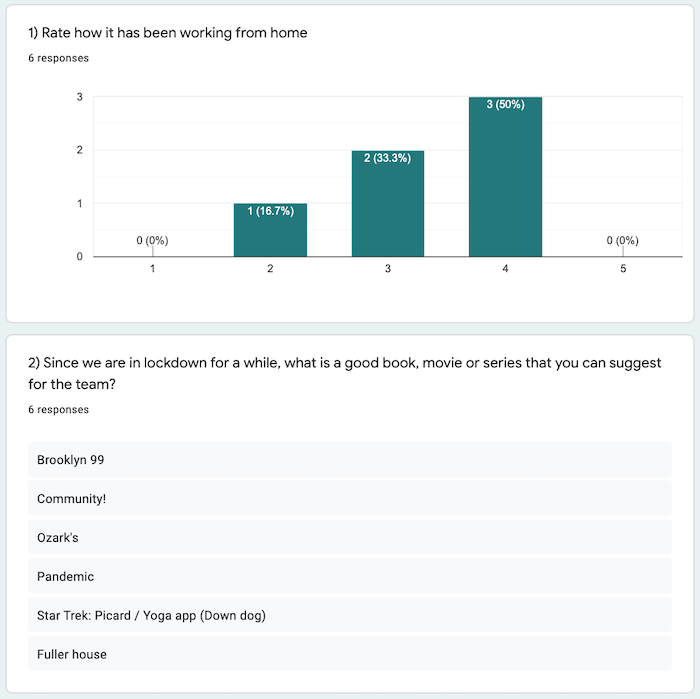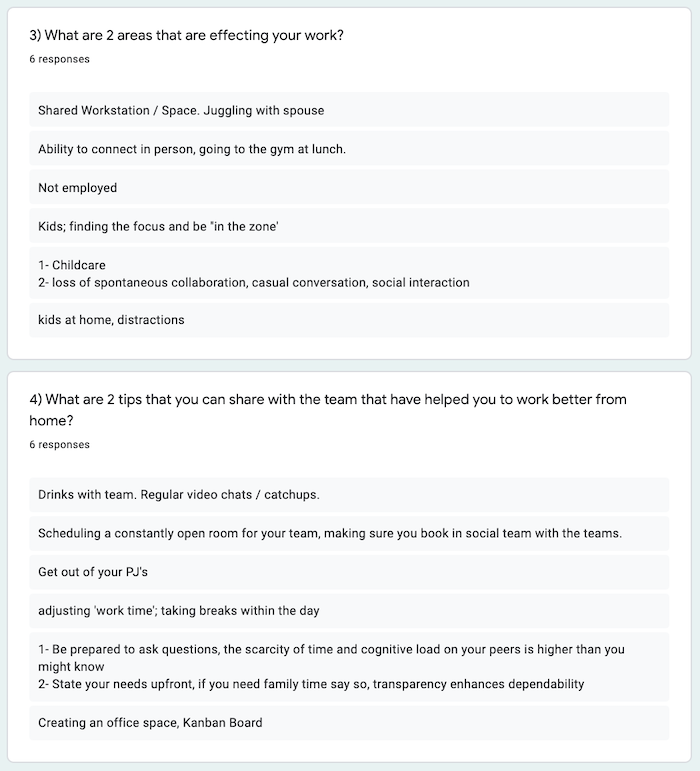By Ruka
Tags: Agile

Here’s how you can run a simple remote retro using Google Forms. You’ll get a step-by-step guide, tips and we’ll look at the pros and cons of using Google Forms.
A retrospective is a chance for a team to check how they’re working and come up with improvements together. But it’s hard to do that as a team when you’re all working remotely. You need a digital space to share ideas in. We’ve found that Google Forms are a simple way to do that.
We had to move to remote retros because of the COVID-19 lockdown. This post is based on a demo I did at an AgileWelly meetup. The meetup focused on remote retros because the lockdown meant lots of teams were working from home (here’s a write-up of all the AgileWelly sessions on remote retrospectives). So this post also looks at what you do when people are in a stressful situation like that.
This is a very simple remote retro that you can run with your team using tools most teams have access to.
All you need is:
You might also want to use a Google doc during this remote retro.
Google Forms are really straightforward to use. They make it easy to ask key questions that you want to address with your team.
Here are the steps for running the remote retrospective:
Think of the types of questions you would like to ask your team.
Check that you’ve got the timings, flow and balance right, and the form link is working, by running through the remote retro with someone.
Here is an example of the retro I ran at the AgileWelly Meetup.

Start the retro with an intro to the topic and read through each question. After that, email or share the link with your team and give everyone 7–10 minutes to fill out the form.
You may want to get people to add their name or initials to their answers.
When all of your team members have submitted their forms, go to the response tab in Google Forms. Share your screen so that everyone can see the answers.
Go through each question one by one and get your team members to explain their answer. If you have a larger group, as Scrum Master you may want to quickly read through all the answers and identify common themes for discussion, rather than have them all read out.
Here are the answers from the AgileWelly retro.


The way you do this depends on the size of your group.
With a smaller group you can ask everyone to pick the point/idea they would like to work on.
If you have a bigger group, you can use the “breakout room” function on Zoom to create smaller discussion groups. (This is only available on Pro accounts. You have to activate the Breakout Rooms feature on the Zoom web portal.)

Within the smaller groups, get each team to discuss one idea they think they should work on. They can then share that idea with the whole team.
Give your team 5 minutes to discuss the ideas.
As Scrum Master, you might want to paste the points raised in a separate Google doc. While the team talks through the points, you can pick out the common themes and then check with the team that you’ve got them right.
Once your team has finished with their discussion, pick the idea that was popular. As a team, formulate a retro goal.
Think about the team and understand what they are going through. If working remotely is new, make the retro as easy as possible. As a Scrum Master you tend to think you need to come up with an exciting and fun retro for the team but there is nothing wrong with a retro that just gets the job done.
Everything takes longer on VC so don’t ask too many questions. Leave space to dig into why people have raised the points they have. Because everyone is in their own bubble, their experiences will be different, and the “why” may not be obvious.
If you run retrospectives straight after your reviews, take a slightly longer break. Sitting in a VC meeting for two hours can feel very long so I have been adding a 20 minute break between each meeting. At the end of the review, I have been sending out the Google Form for everyone to look to fill out during their break. When they come to the retro we are ready to start.
Asking Rating questions gives you a visual chart which can help identify points to discuss. For example, in the AgileWelly meetup I asked people to “Rate how it has been working from home”.
I have been adding an extra fun check-in for the team. With the teams working completely remotely, there is less interaction within the team. So I try to keep the atmosphere friendly and fun with questions about favourite movies or music or that kind of thing.
Add an empathy check-in to understand how the team is feeling. Since there is less face-to-face interaction, I ask questions to help the team understand what others are going through. With one team I asked, “What are the top 3 things on your mind at the moment, work-related or otherwise?” for example.
All Boost COVID-19 updates and resources
Welcome aboard retrospective — when new team members join
Golden moments retrospective — when a project or phase ends
Individual strengths retrospective — reinforce everyone’s contributions
Development continuum retro — tailor your skill-building
Treasure Island Retrospective — learn what motivates your team